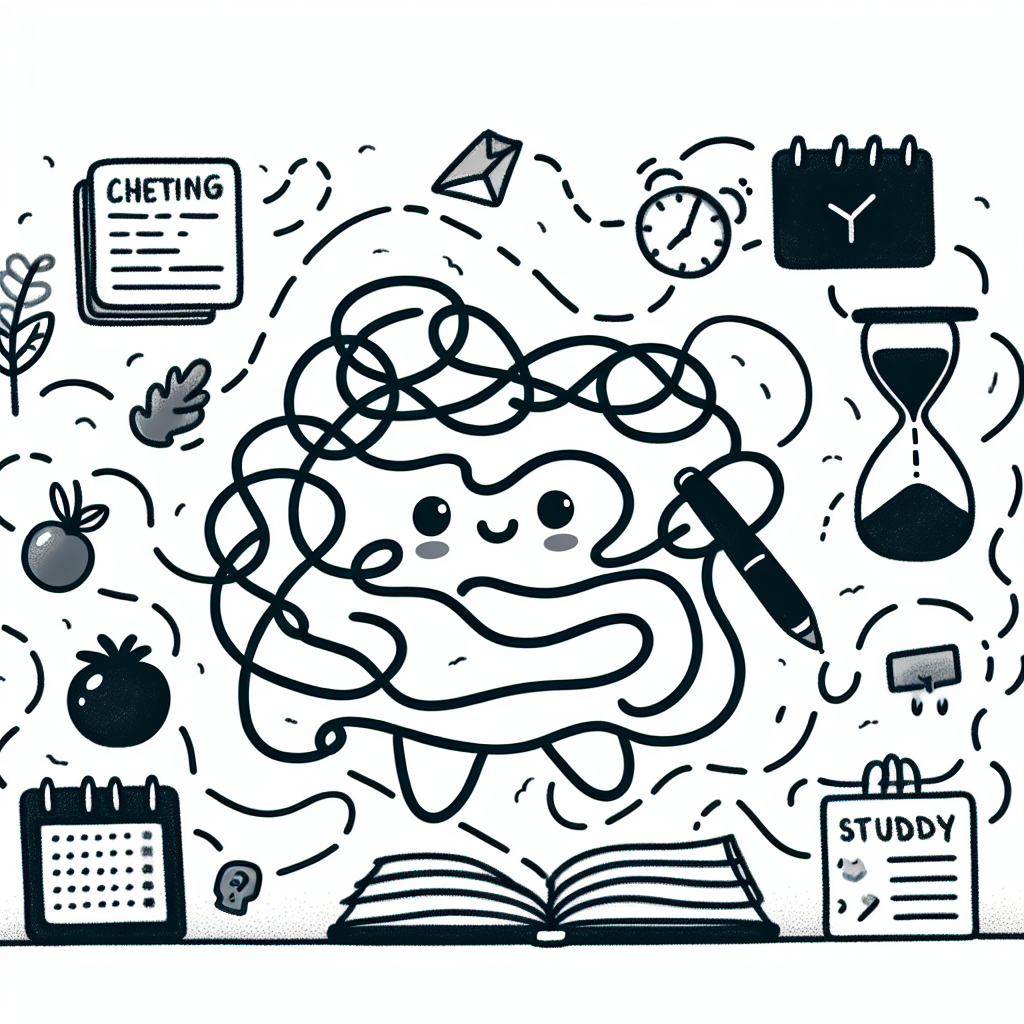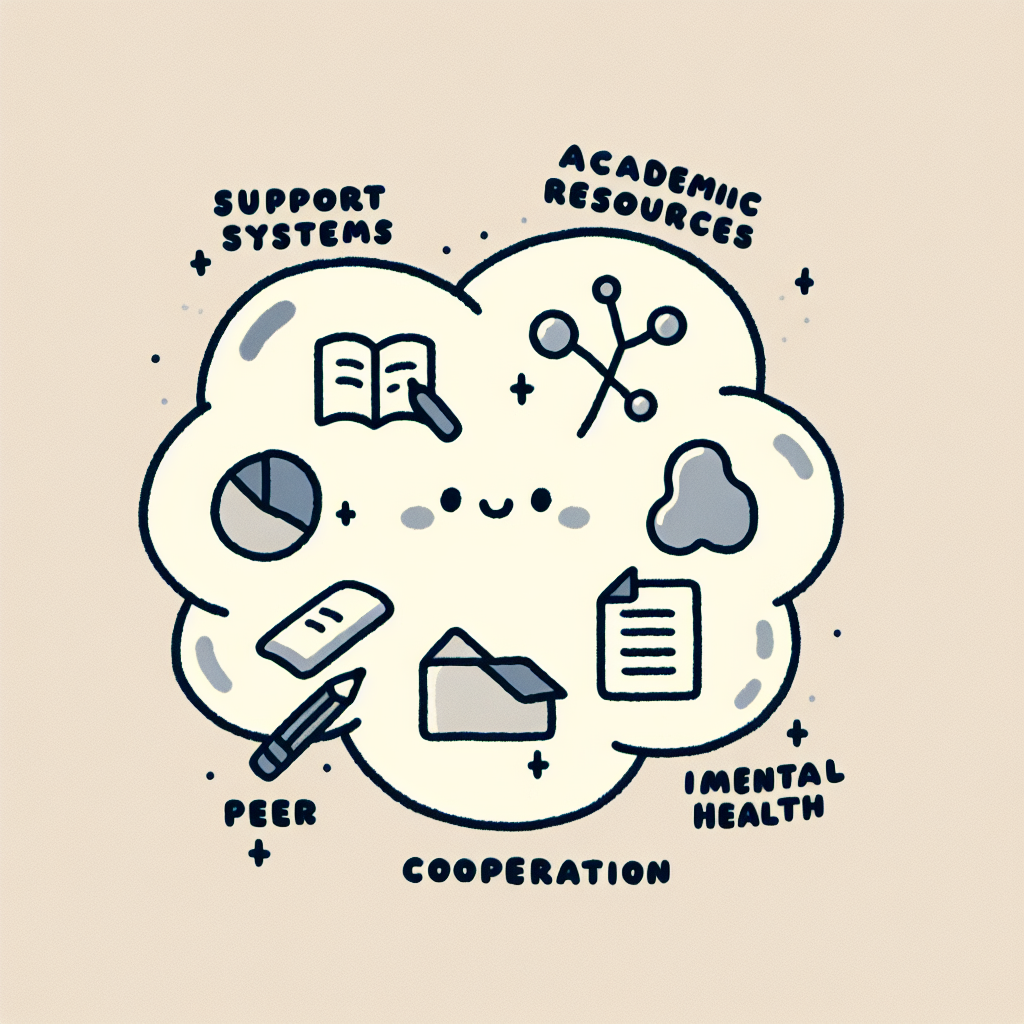Introduction
Effective study habits play a critical role in academic performance. Students who consistently apply structured and thoughtful study methods often achieve better grades, retain information more effectively, and experience less stress during exams.
Study habits are more than just the act of studying—they encompass a combination of strategies, mindset, and environment. This includes how students manage their time, the techniques they use to retain information, their level of motivation, and the physical space in which they work.
Developing good study habits requires personalization, discipline, and adaptability. What works for one student may not be effective for another, so individuals must find the approaches that best fit their learning style and goals. Discipline helps maintain consistency, while adaptability enables students to adjust their methods as academic demands change. Together, these elements form the foundation of strong study habits that support long-term academic success.

🧠 Understanding Your Learning Style
Why Learning Styles Matter
Recognizing your learning style is a key part of developing effective study habits. When you tailor your study techniques to match how you learn best, you improve both efficiency and memory retention. According to the University of Cincinnati, identifying and adapting to your learning preference can make your study sessions more productive and less time-consuming.
Types of Learners
Aural Learners
Aural learners absorb information best through listening. They benefit from lectures, group discussions, and audio materials like podcasts. Repeating information aloud or explaining it to others also helps reinforce their understanding.
Visual Learners
Visual learners prefer to see information. They retain content better when it's presented through images, diagrams, or written text. Useful tools for them include flowcharts, mind maps, and color-coded notes.
Kinesthetic Learners
Kinesthetic learners understand concepts best when they can physically engage with the material. Hands-on activities, movement-based learning, and real-world applications are most effective. Techniques like role-playing or using physical objects in study sessions can enhance their comprehension.
Matching Strategies to Style
Adapting your study habits to your learning style can make a big difference. Aural learners might record lectures and replay them. Visual learners could use flashcards with images or create detailed outlines. Kinesthetic learners may benefit from interactive simulations or practicing problems on a whiteboard. Matching the right techniques to your preferred style helps boost both comprehension and recall.

⏱️ Time Management Techniques
Effective time management is essential for developing strong study habits. Applying structured methods can help students stay organized, avoid procrastination, and make the most of their study sessions.
The Pomodoro Technique
The Pomodoro Technique breaks study time into focused intervals—typically 25 minutes of work followed by a 5-minute break. After four such cycles, a longer break is taken. This approach, recommended by the University of Minnesota, enhances focus and helps prevent burnout by aligning study sessions with the brain’s natural attention span.
The "5+5" Review Method
This method involves reviewing material twice: once 5 minutes after studying and again 5 hours later. According to the University of Minnesota, this technique reinforces memory and reduces the need for last-minute cramming. It supports long-term retention by spacing out repetition over time.
Prioritization & Scheduling
Using planners or digital calendars to map out daily, weekly, and long-term academic goals helps establish consistent study habits. Tools like the Eisenhower Matrix assist in organizing tasks based on urgency and importance. As noted by Bowdoin College, scheduling in this way ensures that high-priority assignments receive adequate attention and that study time is used efficiently.

🎯 Goal Setting & Motivation
Establishing effective study habits begins with clear goal setting and sustained motivation. These two elements help students maintain focus, track progress, and stay committed throughout their academic journey.
SMART Goals
Using the SMART framework allows students to create focused and achievable study goals. SMART stands for Specific, Measurable, Achievable, Relevant, and Time-bound. For example, instead of saying “I want to study more,” a SMART goal would be “I will study biology for 30 minutes every weekday at 6 PM for the next three weeks.” This structure gives clarity and a built-in timeline, making it easier to track progress and adjust if necessary.
Building Intrinsic Motivation
Intrinsic motivation arises when students find personal meaning in what they are studying. Connecting study habits to long-term aspirations—such as becoming a doctor or excelling in a chosen field—can increase engagement and perseverance. When learners understand how their current efforts tie into their values and future plans, they are more likely to remain motivated even during challenging times.
Tracking Progress & Celebrating Milestones
Monitoring progress helps students stay accountable and recognize improvement. Tools like study journals, habit-tracking apps, or simple checklists can provide visual feedback and a sense of accomplishment. Celebrating small wins, such as completing a chapter or sticking to a study schedule for a week, reinforces positive behavior and encourages continued effort. This practice supports the development of consistent and productive study habits.

🏡 Study Environments That Work
Minimizing Distractions
To support better study habits, it's essential to reduce distractions in your environment. This can be achieved by limiting background noise—using noise-canceling headphones or studying during quieter hours. Managing digital interruptions is also key; tools like website blockers or turning off phone notifications help maintain focus. Keeping your workspace free from clutter not only reduces visual distractions but also promotes mental clarity. According to California State University, San Bernardino, a tidy and quiet environment supports more effective studying.
Choosing the Right Study Space
Selecting the right location plays a major role in enhancing study habits. Quiet libraries provide a distraction-free zone, while active lounges may suit students who focus better with ambient noise. Campus study centers offer structured environments with academic resources nearby. Bowdoin College emphasizes the importance of choosing a space that matches your learning style. Good lighting reduces eye strain, ergonomic seating helps maintain focus, and easy access to materials or power sources ensures efficiency.
Organizing Materials
An organized workspace is crucial for effective study habits. Using color-coded binders and folders can help categorize subjects and assignments, making it easier to find what you need. Digital folders with clear naming conventions streamline access to online materials. A minimalist setup—keeping only essential items on your desk—can reduce distraction and increase concentration. California State University, San Bernardino recommends these strategies to help students maintain a focused and productive study environment.

Solo vs. Group Study
Benefits of Independent Study
Independent study offers several advantages for building strong study habits. Studying alone allows for deep focus without distractions, enabling students to concentrate fully on the material. This environment supports learning at a personalized pace, allowing individuals to spend more time on challenging topics and move quickly through familiar ones. Additionally, solo study provides flexible scheduling, making it easier to integrate study sessions into a busy routine.
Advantages of Group Study
Group study complements solo efforts by enhancing study habits through collaboration. In a group setting, students gain exposure to different perspectives that can deepen understanding and reveal new insights. Working with others also introduces a level of accountability—knowing others are relying on you can help maintain motivation and consistency. Furthermore, group members can share resources, such as study guides or notes, which enrich the learning experience (California State University, San Bernardino).
Choosing the Right Study Mode
Choosing between solo and group study depends on the subject matter, academic goals, and personal learning preferences. Subjects that require memorization or deep concentration may be better suited to independent study. In contrast, topics that benefit from discussion and multiple viewpoints can be more effectively tackled in a group. Effective study habits often involve balancing both modes to suit individual needs and objectives.

Leveraging Support Systems
Effective study habits don't develop in isolation. Leveraging support systems can enhance academic performance by offering structure, motivation, and guidance.
Academic Resources
Accessing institutional academic resources is a key component of strong study habits. Tutoring centers provide personalized help in challenging subjects, while writing labs support the development of clear and effective written communication. Faculty office hours offer opportunities to clarify course material and build relationships with instructors (Kansas State University). Utilizing these resources helps reinforce understanding and improve retention.
Peer Networks
Collaborating with peers can make studying more effective and engaging. Study buddies allow for mutual accountability and explanation of difficult concepts. Academic clubs offer a structured environment for exploring subjects in depth, and online discussion forums provide access to diverse perspectives and problem-solving approaches. These peer networks encourage consistency and broaden exposure to new study techniques.
Mental Health & Wellness
Good study habits are closely tied to mental health and overall well-being. Managing stress through relaxation techniques, maintaining adequate sleep, and practicing regular self-care all support cognitive function and concentration. Prioritizing wellness can reduce academic burnout and enhance focus (Kansas State University).

Developing Discipline & Personal Responsibility
Creating Routines
Establishing consistent morning and evening routines can significantly improve study habits. A structured morning routine—such as waking up at the same time, reviewing a to-do list, and setting intentions for the day—helps prime the brain for focus. Likewise, an evening routine that includes reviewing progress, organizing materials for the next day, and reflecting on accomplishments supports consistency and reinforces productive behaviors over time.
Self-Monitoring Tools
Using self-monitoring tools can help students stay accountable and track their progress. Habit trackers and productivity apps allow individuals to visualize their consistency and identify patterns in their behavior. Weekly reflections, such as journaling or reviewing completed goals, can provide insights into what’s working and what needs adjustment. According to Kansas State University, self-monitoring techniques are crucial for developing effective study habits and maintaining long-term progress.
Overcoming Procrastination
To overcome procrastination, students must first identify the underlying causes—such as fear of failure, lack of motivation, or feeling overwhelmed. Once the root issues are recognized, behavioral strategies like breaking tasks into smaller steps, using the Pomodoro Technique, or setting short deadlines can be applied. These tactics make tasks feel more manageable and reduce the urge to delay, reinforcing better study habits over time.

🧪 Adapting & Evolving Your Study Strategy
Evaluating What Works
Effective study habits require regular self-assessment. This involves checking in frequently to evaluate whether your current strategies are helping you meet your academic goals. Creating feedback loops—such as reviewing test performance, tracking assignment completion rates, or reflecting on productivity—can highlight patterns in your learning process. These insights help identify which methods enhance understanding and retention, and which ones need adjustment.
Staying Flexible
Being flexible means recognizing that study habits must evolve with changing circumstances. Course demands may shift throughout a semester, requiring more time on certain subjects or different types of preparation. New technologies, such as digital flashcards or AI-based learning platforms, can offer more efficient ways to study. Additionally, personal goals and learning preferences can change over time. Staying open to trying new approaches ensures that your study strategy remains effective and relevant.
Lifelong Learning Mindset
Developing good study habits is not a one-time effort but an ongoing process. Adopting a lifelong learning mindset means understanding that the skills and techniques you use to study should evolve alongside your education and career. Continuous improvement and curiosity are key. By viewing your study strategy as dynamic rather than fixed, you become better equipped to adapt to new challenges and opportunities throughout your life.

Conclusion
Mastering effective study habits is achievable through intentional planning, self-awareness, and strategic action. By taking the time to understand personal learning styles and setting clear goals, students can create routines that foster consistency and focus.
Every student has the capacity to develop a personalized system of study habits that not only supports academic performance but also contributes to overall personal growth. With the right approach, study habits become tools for success across all areas of learning and life.

📚 References
- University of Cincinnati: Learning Styles and Study Habits – Offers insights into how different learning styles can influence effective study habits and strategies to match individual preferences.
- University of Minnesota: Boost Your Study Habits – Provides additional resources aimed at helping students improve their study habits through time management and goal-setting techniques.
- Bowdoin College: Studying Habits for Successful Students – Highlights strategies that successful students use to build consistent and productive study habits.
- Kansas State University: Effective Study Habits – Discusses practical steps for developing effective study habits, including environment setup and note-taking methods.
- California State University, San Bernardino: Studying Tips – Shares useful studying tips designed to enhance students’ academic performance through better study habits.














